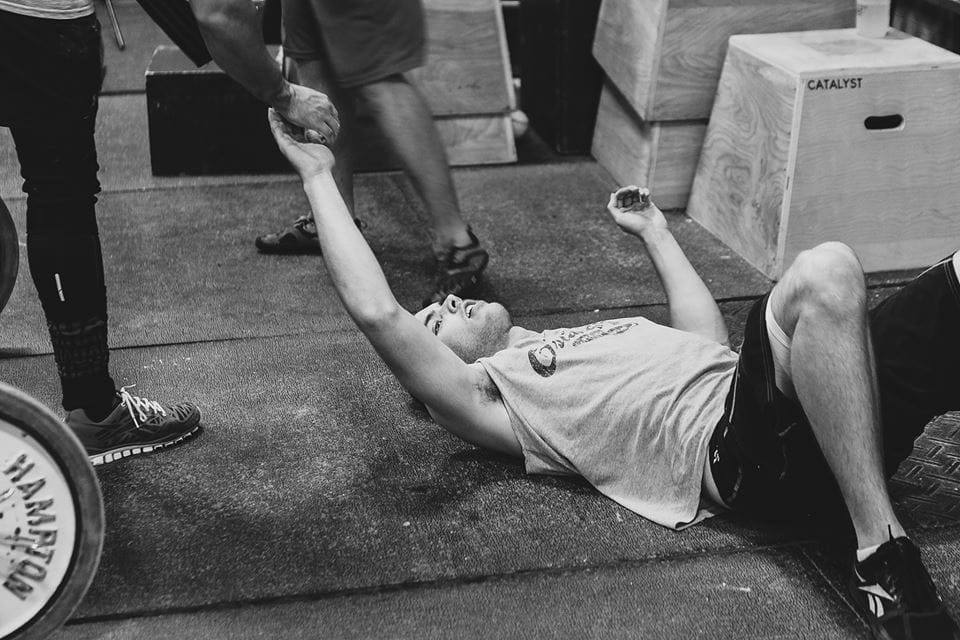Skill practice: Rope Climbs
10-minute AMRAP:
10 pushups, 20 OHWL, 1 Rope Climb
15 pushups, 25 OHWL, 1 Rope Climb
20 pushups, 30 OHWL, 1 Rope Climb
….continuing to add 5 pushups and 5 OHWL each round.
Then: 20 minutes of mobility.
It may get tough to raise your arms above your shoulders here; good. Localized fatigue is the goal, even though you’ll be alternating between pulling and pushing movements.
Inhibitory rest occurs when an antagonistic muscle is working. During a pushup, for instance, teres minor, latissimus dorsi, and trapezius will shut down (they’ll lose muscle ‘tone’) to allow the pecs to fully activate. Since your body doesn’t like to pull the emergency brake and press the gas pedal at the same time, when a muscle on one side of a joint fires, the opposing muscle goes into total shutdown. At least, this is true in an environment of joint isolation.
The reality of a rope climb, though, defeats inhibitory rest. Especially in a novice, while the ‘big muscles’ like the lats are pulling, the emergency brakes are still on to stabilize the shoulder. Amateur trainers and coaches talk a lot about the ‘small stabilizer muscles’ – but the big guys are stabilizers, too, when they’re not movers. If you’re doing a triceps pushdown, the biceps relax; if you’re doing a triceps curl, the biceps relax. But in a three-dimensional environment of mobility and stability together, like a rope climb or squat, the ‘stabilizers’ and ‘prime movers’ simply alternate roles on every rep.
I want you to use your legs on the rope climb. But the act of holding on will require the biceps to freeze the elbow while brachioradialis squeezes the grip. Then biceps will have to quickly turn off while the deltoid raises the arm further up the rope, and reactivate with milliseconds of rest. That’s gonna get tiresome. Enjoy it.
(Friday factoid: there’s no such thing as a ‘bicep’ or ‘tricep’ – a ‘biceps’ is the correct term for both single and plural.)
Skip to content
Fill out the form below to get started
Take the first step towards getting the results that you want!

